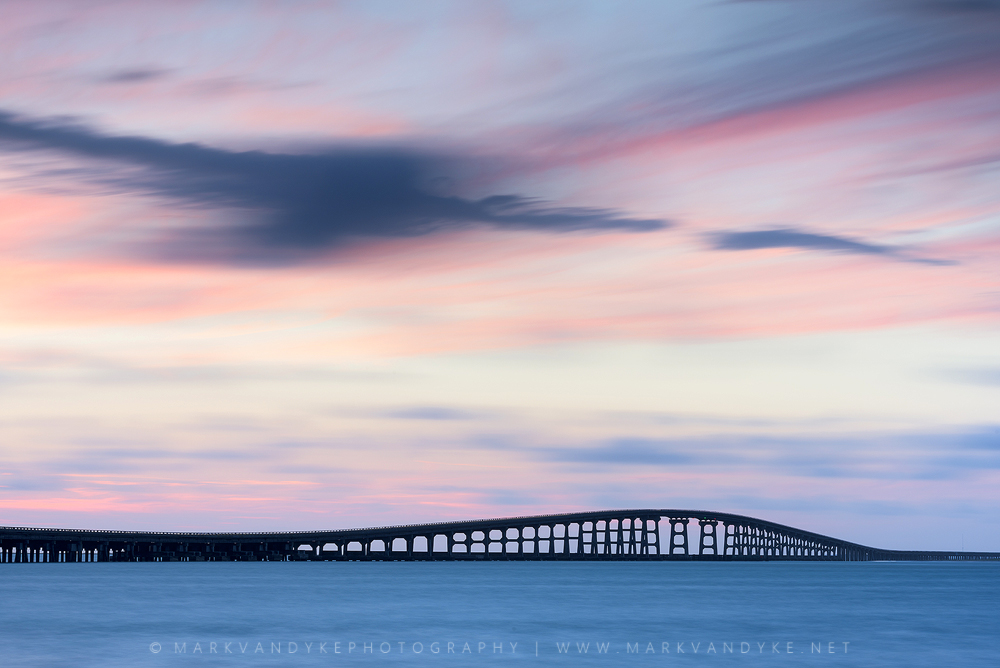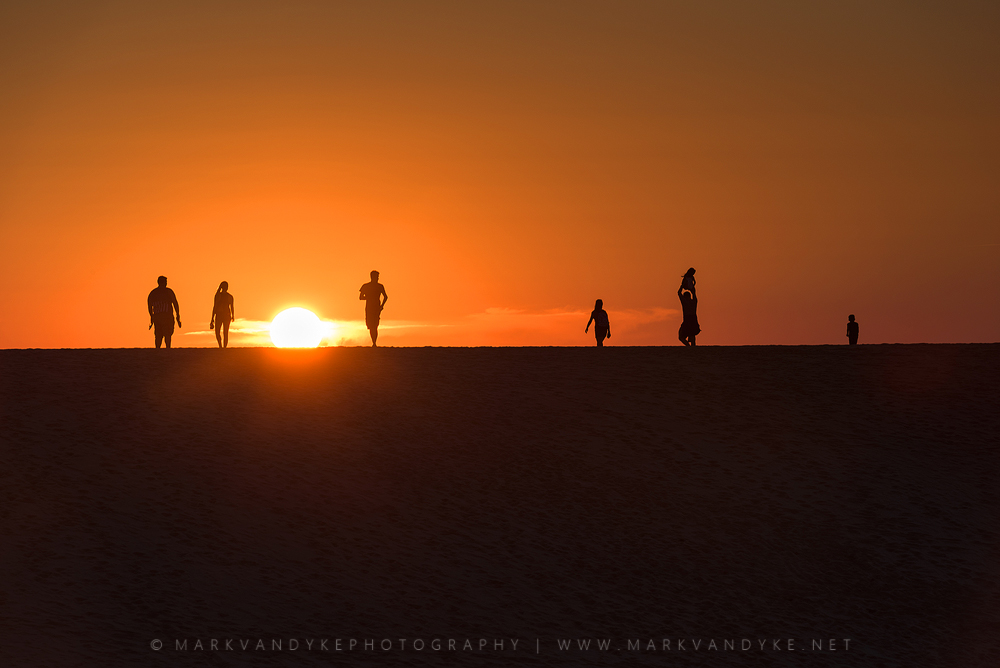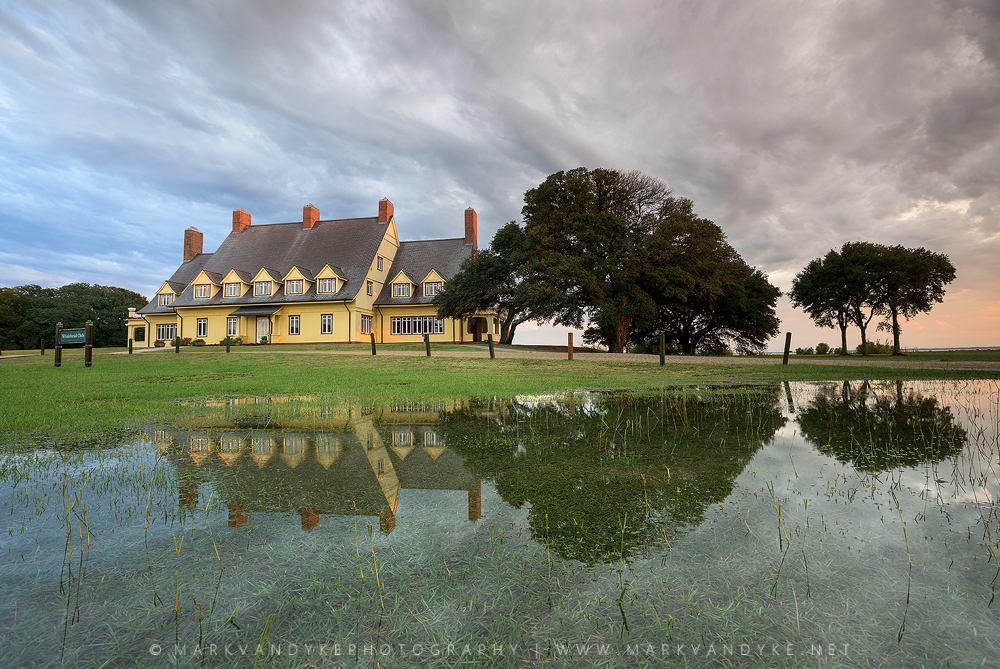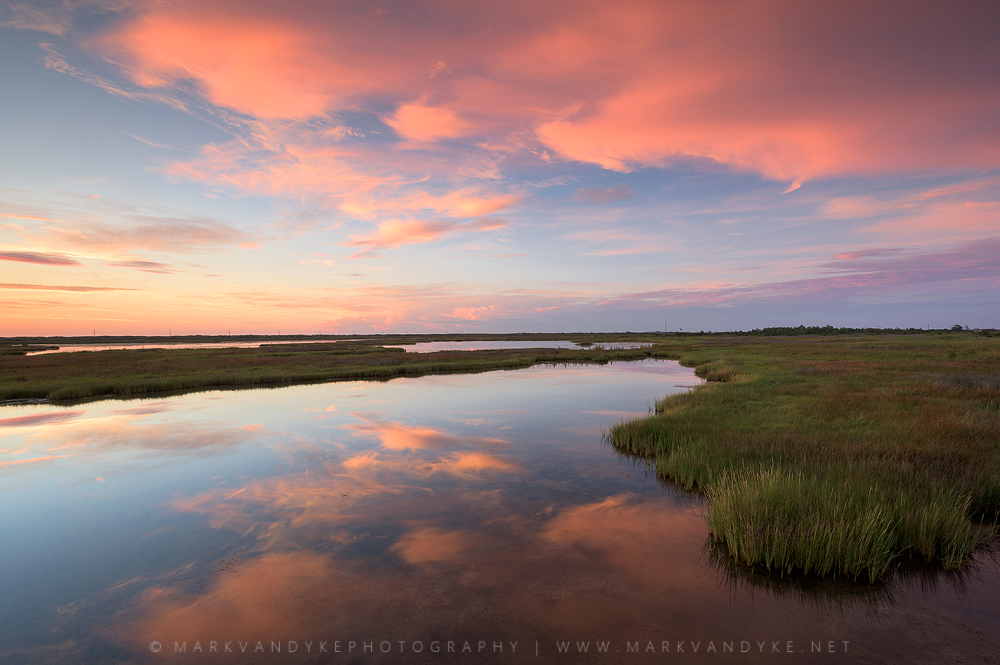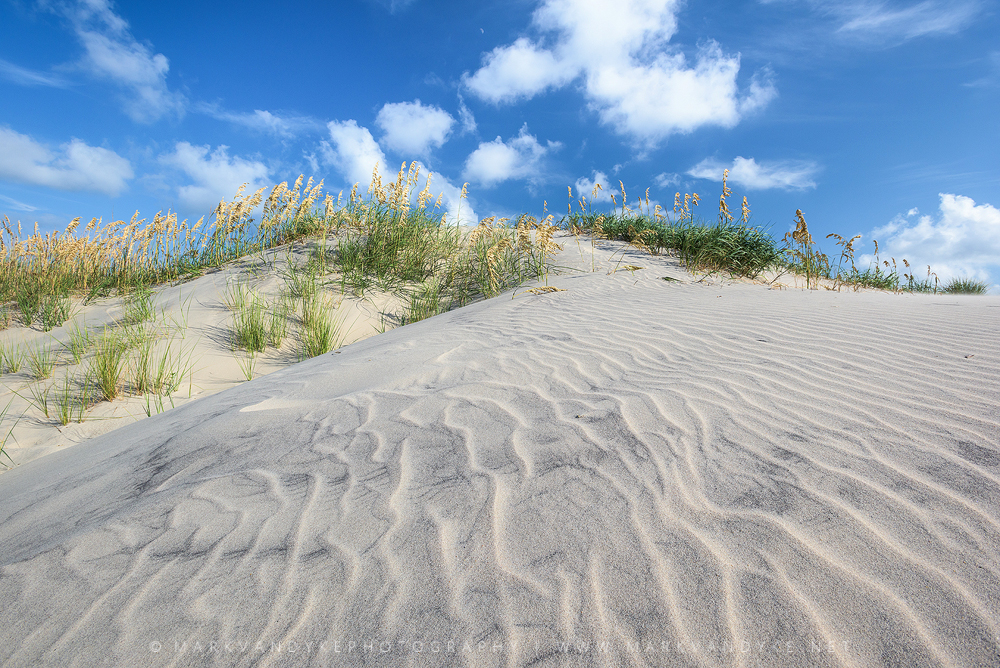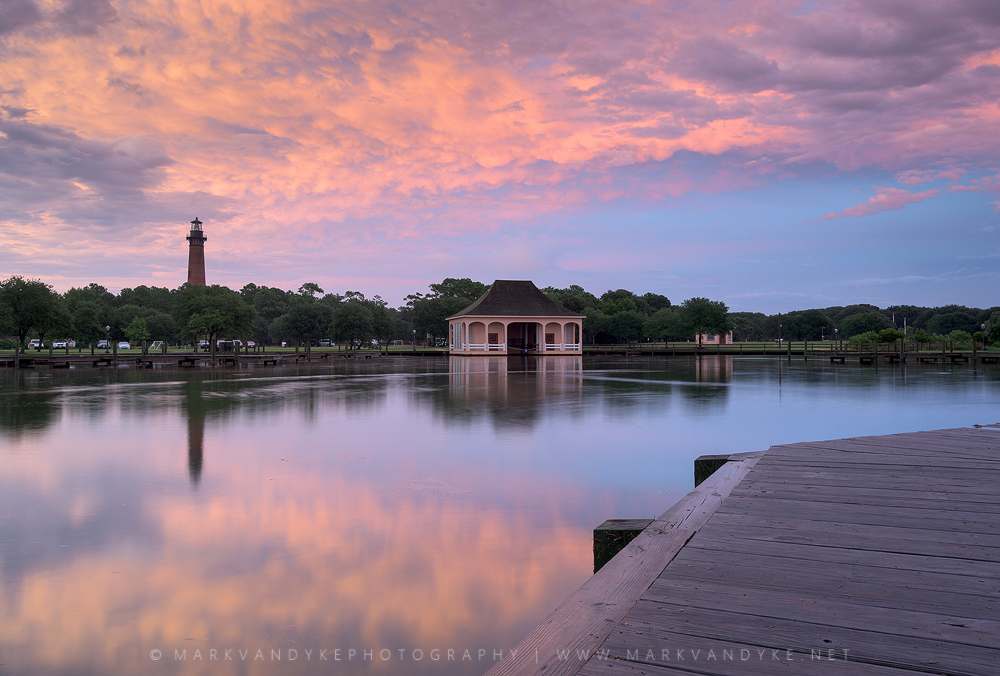By the time August rolled around I was pretty down. It’s not unusual for the summer months to be a bit of a downer for me from a photography standpoint as I try to hunker down and save money and energy for the coming autumn blitz. However, this was year two as a full-time business and if I’m being completely honest, I wasn’t getting it done. It felt like I was losing this great opportunity and I was anxious. Anxious to do something, anything. While some excel at marketing and others at selling, I’m at my best when I’m out in the field behind the lens. The longer I’m out the better. No phones, no e-mail, no social media. Hard to run a business that way but when things started feeling claustrophobic this past August I did what I do best, I got outside in one of my favorite places and began putting camera to face.
Camping in the Outer Banks during the late summer months is an exercise in futility. The romantic thoughts of sleeping underneath the stars near a roaring ocean with a comfortable breeze are quickly squashed by the reality of the situation. In my journal I wrote simple one word descriptions of the situation: heat, sweat, bugs, calm, thick, sun, sharp, constant, no escape, no mercy. Reading it back even makes me laugh! It was so calm and so warm that the act of laying on my back in the tent at night would leave my body perspiring profusely. I would lie awake listening to the dulled thwack, thwack, thwack of tires as autos traveled nearby Oregon Inlet Bridge, passing over the expansion joints between each precast concrete section along the bridge. The revolving door of neighbors I had at the campsite didn’t do much better at night, with one neighbor early in the week rising every two hours or so during the night to get into the car, start the engine, grab fifteen minutes or so of air conditioning and then back into the tent to repeat the process! Eventually, my body would magically equalize the situation and my core temperature would fall enough to find some shut-eye before the next sunny day.
I recall the words of one of my favorite local authors, Jan DeBlieu, who writes about Hatteras Island in her book Hatteras Journal (1987):
“A sense of freedom abounds, but at the sacrifice of comfort. For all practical purposes I am sitting in the middle of a desert. Nothing flourishes here that needs much fresh water, or that lacks hardiness and the determination to survive. You cannot escape the salt, the sun, the rotten-egg stench of marsh, the mosquitos and greenhead flies. The coast is not a place where you can easily ignore the elements. …And yet the clearness of light, the constant swish of the surf, and the yield of the sand underfoot spark a sensuousness that strips aside the discomfort I would normally feel in such a barren and hostile setting. Each element–earth, wind, water–wields a double-edged sword of pleasure and pain.” (p.46)
Thus, the table was set for me. I was outside in a place that was both harsh and beautiful, offering no shortage of opportunities behind the lens. And I had absolutely nothing to do but drink water, seek shade during the long days, and find compositions during the periods of sweetest light. My days would start in a frenzy before dark as I broke camp and made my way to what I perceived as the best opportunity each day behind the lens–sunrise. Following the sunrise I often had the habit of driving Beach Road along the oceanfront in Nags Head where locals and visitors alike would use the trail network to exercise and travel to the beaches (I’ve always prefered this slower route to the larger and faster parallel Highway 158). Then, as the sun would rise above the first row of oceanfront cottages and begin to warm the side of my face with summer sun, I would seek the shade of mature oak trees in the parking lot of Jockey’s Ridge State Park (or similar) where I would relish the opportunity to read books and write in the journal, taking advantage of whatever breeze I could find. When I just couldn’t take the constant sweat any longer, I often found darkness in the Nags Head movie theatre where I would trade valuable dollars for a few hours of very needed comfort! Early evening was the signal to get back out there, setting myself up for the last light of day. And more often than not, long days would end with a pitch dark walk along the beach, ear buds in but still pervious to the crashing waves and whistling winds of the beach, my legs and back enjoying the rare absence of pack weight.
I often question why I feel so at home in the Outer Banks of North Carolina, specifically Hatteras Island. I’m not sure that I really understand it still, but some attributes definitely stand out. For one, there is a sense of wildness that is unmistakable. When you reach the crest of the Bonner Bridge and view the thin strip of sand surrounded by massive bodies of water on each side, you can’t help but feel FAR removed from the mainland and all of its luxuries. A day on the islands reinforces that this is in fact a place where nature–wind, water, sand, sun–still rules. Humans, despite their dominating desires, haven’t been able to tame this place; the elements are just too large and powerful. Thus, there seems an inherent understanding from many locals that one must work with and respect nature (a feeling I don’t get at most beaches). Fisherman understand how to read waves, water colors, weather patterns. Locals understand tides, lunar phases, interconnected roles of vegetation and stabilization–nor’easters and hurricanes. And Hatteras is still a place of trucks. No, not the flashy, ridiculous things that visitors often bring that seem to shout, “Over here! Look at me! Pay me attention!,” but the rusted, weathered, lumbering ones that advertise local businesses, pull large boats, haul coolers and fishing gear onto the deep sand beaches. Trucks that are responsive and capable when the highway floods from over wash, or rain ponds so deep that anything smaller would experience discomfort. Hatteras is a blue collar place–or at least it was before real estate replaced the once dominant commercial and recreational fishing industries as the dominant industry. Strip malls and fast food joints do not exist (except those damn concrete block beach stores that seemed to sneak onto the islands…yeah, the ones that have been going out of business for years now–everything 75% off!). Homes were all built of wood and high upon stilts (now colorful concrete siding is creating a more Floridaish look to things). I always perceived Hatteras as a humble place, where outdoor activities and those who loved and lived by them found sanctuary. Even with mcmansion homes and new types of development sneaking into the mix, a drastic increase in regulation and enforcement, and a host of other changes occurring, I still feel the outdoor culture and power of the islands overshadows everything and provides a place of unique character and special draw for me.
As I worked my way north and south along the barrier islands of the Outer Banks via NC-12 (the Outer Banks Scenic Byway) it became apparent that there really is no such thing as being in the “best” place at the “best” time. It would be more accurate to say that a photographer should be in a serviceable spot given his or her unique skillset in conjunction with given conditions. And yeah, failures behind the lens still happen, at least for me. As a photographer, I like to go wide and I tend towards contextual frames. These tendencies, combined with my love of water–in the form of moving waves, reflections, flowing rivers etc–make my ideal locations differ greatly from other photographers who might have entirely different tendencies and desires. Thus, I stopped putting pressure on myself to be in the best place at the best time sort of thing. If I could just put myself into a serviceable location where I could practice my own skillset and execute an image to my liking then I was happy. Instead of getting one trophy shot over the course of several weeks, I got a dozen story telling shots that together as a whole had more meaning for me personally. This trip more than most others before it solidified that I needed to change my shooting style from the antiquated Ansel Adams 12-a-year is great mindset to something more in tune with my own desires and beliefs as an artist: It was time to stop trying to be like other artists before me and to just be my own artist.
After about a week in the tent with abnormally hot and calm conditions, the winds returned and life got much easier. Nights were more comfortable, sleep came easier, and there were long reprieves from the biting insects that had left my feet and legs looking like a child with measles. And with increasing wind, the sandy floor of the islands began to come alive with waving patterns that danced before the lens. The opportunities of the first week were displaced by new opportunities at new locations. It was refreshing and it was energizing. While most years August is a down month of little activity, this trip was really important to me. The trip was like a shot in the arm heading into the autumn season. I’ve got a new outlook on how to do this photography thing for me. You’ll likely see some minor changes in my photostream in the coming months, and hopefully you’ll find them to be positive changes that better represent me and my shooting style as an artist!
- The Oregon Inlet moves with an incoming tide through the Oregon Inlet and beneath the Bonner Bridge in North Carolina’s Outer Banks.
- First light of morning finds deep shadows in wind rippled dunes of Jockey’s Ridge State Park in the Outer Banks of North Carolina
- Summer grasses wave and catch the last light of evening at Bodie Island Lighthouse on Cape Hatteras National Seashore.
- Sunrise reflects the Bodie Island Lighthouse into a calm rain puddle
- Sunset paints colorful reflections at Corolla, North Carolina’s Heritage Park.
- Pastel evening skies over the Herbert Bonner Bridge, the only land connection between the Hatteras Islands and the mainland of NC
- Silhouettes dot the high sand ridges of Jockey’s Ridge State Park in North Carolina’s Outer Banks as the sun sets.
- Sand dunes reflect into a calm tidal pool along Cape Hatteras National Seashore in North Carolina’s OBX
- Strong winds erase footprints and dance with patterns in the deep sands of Jockey’s Ridge State Park in North Carolina’s Outer Banks.
- Pink skies match the coloring of late summer blooming seashore mallow along the pedestrian boardwalk in North Carolina’s Outer Banks
- A stormy evening gives way to calm reflections of the Whalehead Club in Corolla’s Heritage Park.
- Summer skies hang above lush green grasses at the historic Bodie Island Lighthouse in North Carolina’s Outer Banks
- The first light of morning reflects pink coloring into the marshes behind Bodie Island Lighthouse on Cape Hatteras National Seashore in North Carolina
- Sea Oats and wind patterns decorate a tall sand dune within Pea Island National Wildlife Refuge on Cape Hatteras National Seashore in North Carolina
- Pink Seashore Mallow decorates the wooden boardwalk behind the Bodie Island Lighthouse in North Carolina’s Outer Banks
- Waterfront development reflects into Shallowbag Bay in Manteo, North Carolina
- Amazing sunrise clouds reflect at the historic Bodie Island Lighthouse in North Carolina’s Outer Banks.
- Wind creates patterning along the sand dunes at Pea Island National Wildlife Refuge on North Carolina’s Cape Hatteras National Seashore.
- Dark Clouds move into the frame and reflect into a calm marsh along Cape Hatteras National Seashore in North Carolina’s Outer Banks
- Seashore Mallow decorates the wooden boardwalk at North Carolina’s Bodie Island Lighthouse
- Reflected light finds storm clouds above Corolla’s Heritage Park in North Carolina’s northern Outer Banks.
- Wind patterns reveal in a sand dune along Hatteras Island on North Carolina’s Cape Hatteras National Seashore.








